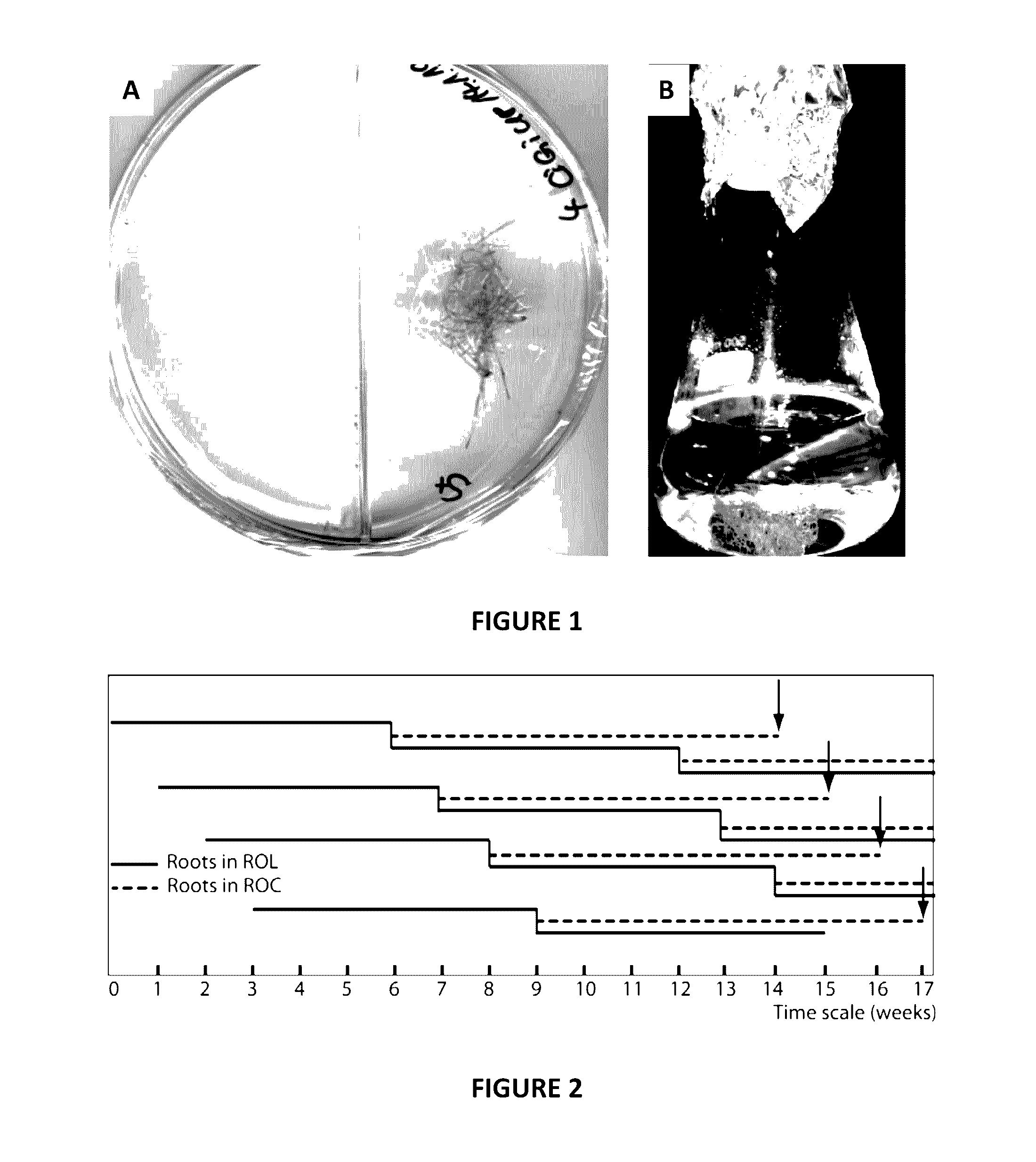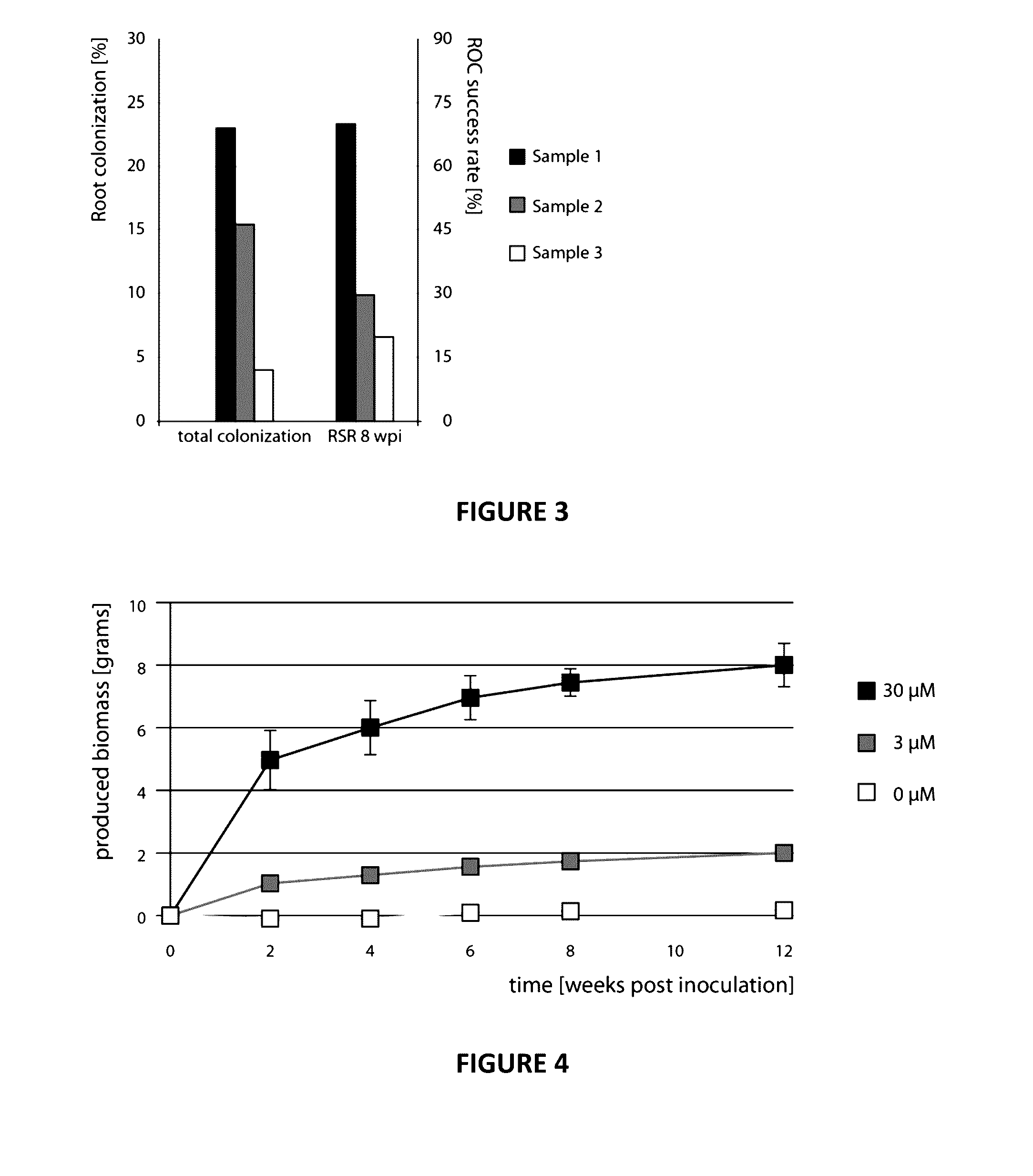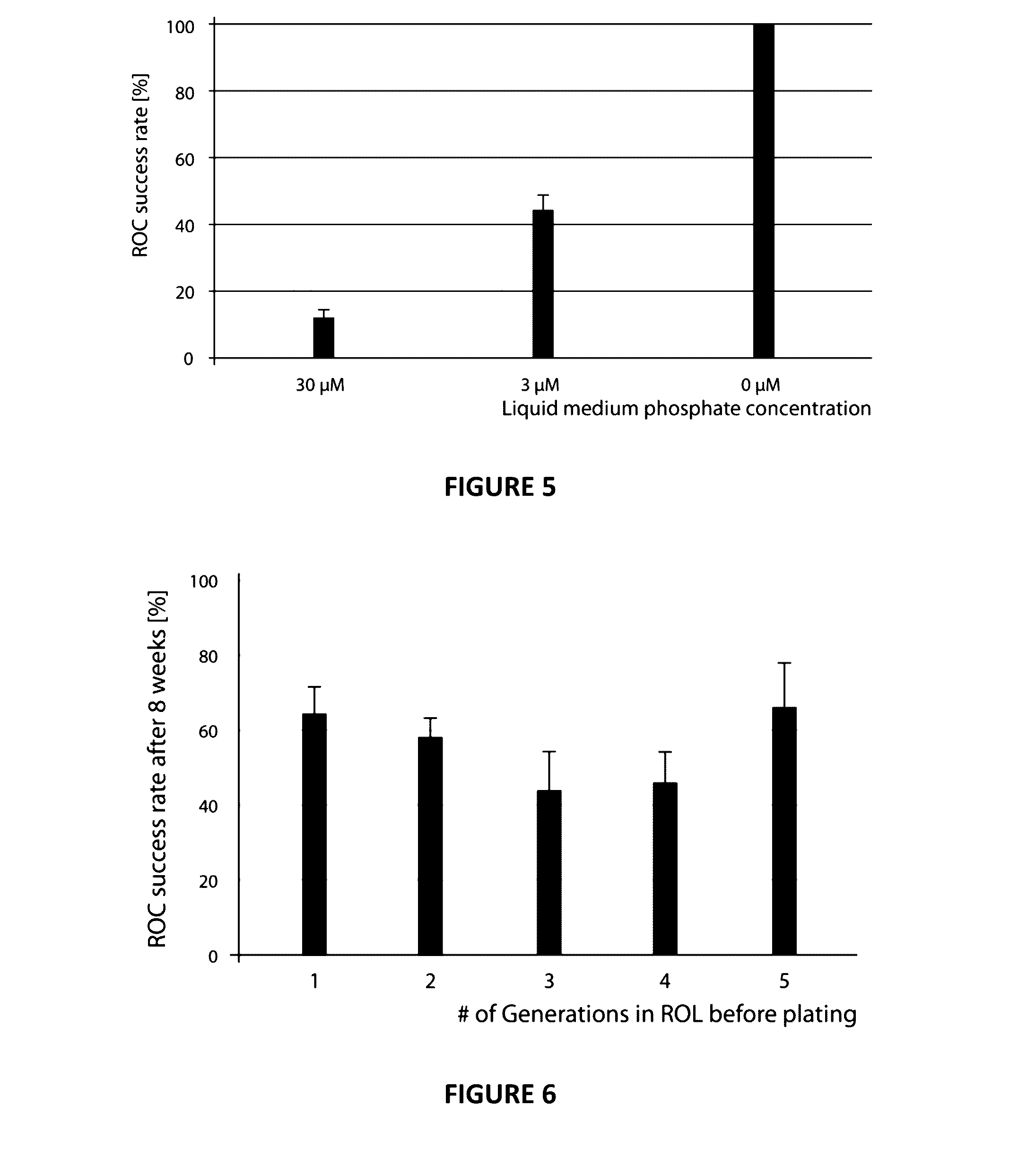System and Methods for Continuous Propagation and Mass Production of Arbuscular Mycorrhizal Fungi in Liquid Culture
a technology liquid culture, which is applied in the field of system and methods for continuous propagation and mass production of arbuscular mycorrhizal fungi in liquid culture, can solve the problems of affecting the efficient production of amf inoculum in industrial quantities, not being widely commercialized, and complicated the development of cost-efficient large-scale amf material production, etc., to achieve high proliferation rate, high growth rate, and cost- and time-efficien
- Summary
- Abstract
- Description
- Claims
- Application Information
AI Technical Summary
Benefits of technology
Problems solved by technology
Method used
Image
Examples
example 1
Biological Material and Root Organ Culture (ROC)
[0121]Rhizophagus irregularis MUCL43194 (=DAOM181602, =DAOM197198), Biosystematic Research Center, Ottawa, Canada (Chabot et al. 1992) was cultivated in in vitro root organ culture (ROC, FIG. 1A) with Agrobacterium rhizogenes Ri-T-DNA transformed chicory (Cichorium intybus) roots (Fontaine et al., 2004) on modified Strullu and Romand (MSR) medium (Strullu & Romand, 1986, modified by Declerck et al., 1998) in split-plates (two-compartment Petri-dishes, FIG. 1A). ROC was maintained by cutting the colonized roots into pieces and transferring them onto the sugar-containing root compartments in new plates (Fortin et al., 2002).
example 2
Initial Root Organ Liquid Culture (ROL)
[0122]The initial ROL was established by inoculating 400 ml of liquid culture medium in a 500 ml Erlenmeyer flask with about 1.5 g of chicory roots from a split-plate culture. Cultures were incubated at room temperature (about 22° C.) in the dark, under constant slow shaking (30 rpm) (FIG. 1B).
example 3
Culture Method Development
[0123]After initial in vitro culture establishment, all ROC and ROL media used were supplemented with 300 μM ammonium sulphate (=mMSR medium), because the MSR medium, although published as containing 180 μM (Declerck et al., 1998), contains only 188 nM ammonium. Two different sucrose concentrations in the root compartment of the split-plates were tested, 0.5% (w / v) and 1% (w / v). For solidification, 0.3% (w / v) gellan gum (Gelrite™ Roth, Karlsruhe) was used for the root compartment and (after testing different concentrations) 0.1% or 0.05% (w / v) for the fungal compartment. The split-plates were incubated at 27° C. in the dark.
PUM
 Login to View More
Login to View More Abstract
Description
Claims
Application Information
 Login to View More
Login to View More - R&D
- Intellectual Property
- Life Sciences
- Materials
- Tech Scout
- Unparalleled Data Quality
- Higher Quality Content
- 60% Fewer Hallucinations
Browse by: Latest US Patents, China's latest patents, Technical Efficacy Thesaurus, Application Domain, Technology Topic, Popular Technical Reports.
© 2025 PatSnap. All rights reserved.Legal|Privacy policy|Modern Slavery Act Transparency Statement|Sitemap|About US| Contact US: help@patsnap.com



